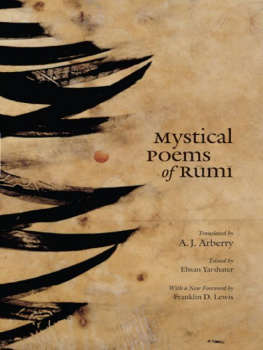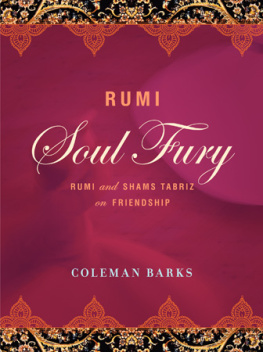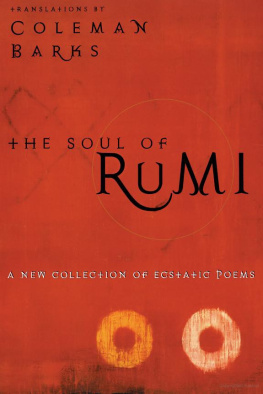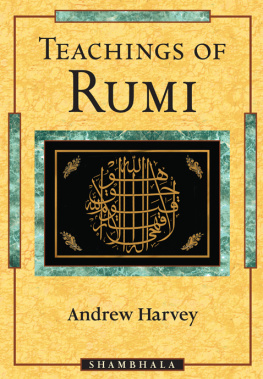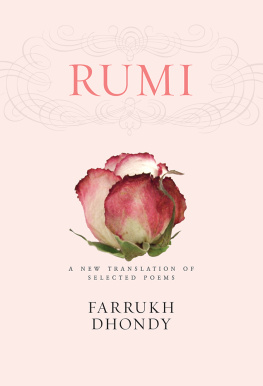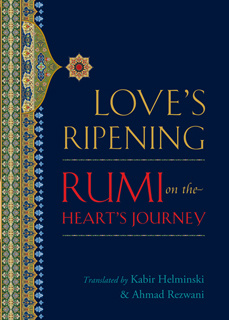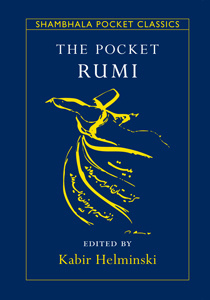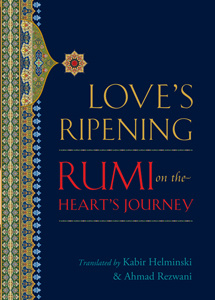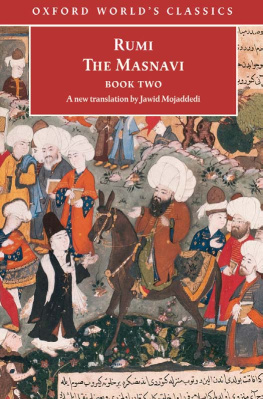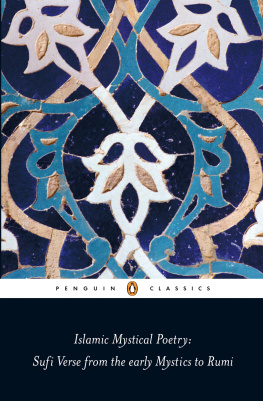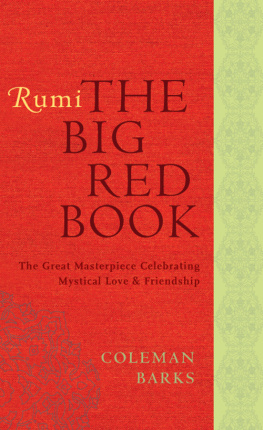Table of Contents
Untitled Sadegh Tabrizi, 100 x 100 cm, ink on parchment


The translations in this volume were originally published in two books. The first volume, including the first 200 poems, or ghazals, appeared in 1968 under the title Mystical Poems of Rm 1 , First Selection, Poems 1 - 200. It was part of a UNESCO Collection of Representative Works and was accepted in the translation series of Persian works jointly sponsored by the Royal Institute of Translation of Teheran and United Nations Educational, Scientific, and Cultural Organization (UNESCO). The second selection, prepared by Hasan Javadi, was published in 1979 by Bibliotheca Persica as number 23 in their Persian Heritage Series, edited by Ehsan Yarshater with the assistance of the Center for Iranian Studies at Columbia University. It was reprinted in 1991 by the University of Chicago Press under the title The Mystical Poems of Rm 2 , Second Selection, Poems 201 - 400 . This combined and corrected edition contains the text and notes from those two books as well as significant revisions based on a new reading of Arberrys original handscript and some new notes and a new foreword by Franklin D. Lewis.
Published by arrangement with Bibliotheca Persica.
The University of Chicago Press, Chicago 60637
Poems 1-200 and notes to poems 1-200 1968 by A. J. Arberry
Poems 201-400 and notes to poems 201-400 1979 by Ehsan Yarshater
Combined and Corrected edition with a new Foreword by Franklin D. Lewis 2009 by The University of Chicago
All rights reserved.
Originally published in two volumes. Poems 201-400 originally published in 1979 as
No. 23 in the Persian Heritage Series, Bibliotheca Persica.
University of Chicago Press edition 2009
Printed in the United States of America
18 17 16 15 14 13 12 11 10 09 1 2 3 4 5
ISBN-13: 978-0-226-73162-9 (paper) ISBN-10: 0-226-73162-6 (paper)
Library of Congress Cataloging-in-Publication Data
Jalal al-Din Rumi, Maulana, 1207-1273.
[Divan-i Shams-i Tabrizi. English. Selections]
Mystical poems of Rumi / translated from the Persian by A.J. Arberry ; annotated
and prepared by Hasan Javadi; foreword to the new and corrected edition by Franklin
D. Lewis ; general editor, Ehsan Yarshater.
p. cm.
Includes bibliographical references.
ISBN-13: 978-0-226-73162-9 (pbk. : alk. paper)
ISBN-10: 0-226-73162-6 (pbk. : alk. paper) 1. Jalal al-Din Rumi, Maulana,
1207-1273Translations into English. 2. Sufi poetry, PersianTranslations into
English. I. Arberry, A. J. (Arthur John), 1905-1969. II. Javadi, Hasan. III. Lewis,
Franklin, 1961- IV. Yar-Shater, Ehsan. V. Title.
PK6480.E5A72 2008
891.551dc22 2008034071
The paper used in this publication meets the minimum requirements of the American National Standard for Information SciencesPermanence of Paper for Printed Library Materials, ANSI Z39.48-1992.
A page from A. J. Arberry; translation of Mystical Poems of Rumi , in his own handwriting, showing poems 285-287. (Courtesy of Hasan Javadi).
Foreword
TO THE NEW AND CORRECTED EDITION
A professorship of Arabic at Cambridge University was established in 1632 and endowed by Thomas Adams, who had made his fortune as a draper and haberdasher, and later went on to become the Lord Mayor of London. As its name implies, the Sir Thomas Adamss Professorship of Arabic was to be devoted to the study of Arabicit is the oldest endowed professorship for this purpose in the English-speaking world. Several of the professors who occupied the Sir Thomas Adams chair at Cambridge in the twentieth centuryE. G. Browne, C. A. Storey, R. A. Nicholson, and A. J. Arberrywere, however, equally or even more renowned as Persianists. Indeed, the latter two especially distinguished themselves as scholars of the Persian mystical poet Mauln Jall al-Dn Rm, now known in English simply as Rumi, or in Turkey as Mevlana.
While Edward Granville Browne (1862-1926) was perhaps not as enamored of Rumi (Jallud-Dn Rm, as the scholarly conventions were then spelling his name) as two of his successors to the Sir Thomas Adamss Professorship of Arabic would be, he nevertheless passed on to his students a deep and abiding love for the poet he described as without doubt the most eminent f poet whom Persia has produced, while his mystical Mathnaw deserves to rank amongst the great poems of all time. Nicholson would later go on to edit and translate Rumis great narrative poem the Ma s navi (also transliterated as Mathnav or Ma th naw ), a project to which he devoted a large part of his scholarly career. Although attempts had been made to translate parts of Rumis Ma s navi into English before Nicholson did so, his selection from Rumis Dvn-i Shams-i Tabrz , or great Dvn ( Dvn-i kabr ), was the first work in English devoted to Rumis ghazals, of which Nicholson remarked, they reach the utmost heights of which a poetry inspired by vision and rapture is capable.
Arthur J. Arberry (1905-69), the translator of the present work, had attended the funeral of Professor E. G. Browne in 1926 and in 1927 received the scholarship for Cambridge students Browne had established in his will. Arberry used this scholarship to pursue his studies in Persian and Arabic, becoming a student of R. A. Nicholson and obtaining his doctorate at Cambridge in 1936. In 1944, after some time spent in Cairo, A. J. Arberry succeeded Vladimir Minorsky as Chair of Persian at the School of Oriental and African Studies at the University of London. Meanwhile, back in Cambridge, C. A. Storey had succeeded Nicholson as Thomas Adams Professor of Arabic.
But when Storey retired in 1947, Arberry returned to Cambridge to himself assume the position of his former teacher, Nicholson, and his benefactor, Browne, as Sir Thomas Adams Professor.
Though Arberry did not publish on Rumi while Nicholson was still alive, during his twenty-year career at Cambridge he devoted much of his scholarly efforts to building upon his mentors project of translation and introduction of Rumi to the West. Arberrys voluminous scholarly output included translations of some poems of Rumi in his Immortal Rose: An Anthology of Persian Lyrics (London: Luzac, 1948), verse translations of Rumis quatrains ( rubyt , 1949), his translation of Rumis lectures and discourses ( Fhi m fh , 1961), two volumes of prose translations of selected stories from Rumis Ma s nav (1961 and 1963), selections from the spiritual diaries of Rumis father, Bah al-Dn-i Valad ( Marif , 1964), and an extended selection of Rumis mystical lyrics (1968 and, posthumously, 1979). We may also note that during these years Arberry also translated two works tangentially related to Rumi: both the Qurn itself, which figures so prominently in Rumis poetry, as well as the famous modern Persian poem by Muhammad Iqbal, in which Rumi features as a character, guiding Iqbal (just as Virgil guided Dante) through the heavens.

Arberry and Nicholson together thus provided the major portal to the poetry of Rumi for English-language readers. In the decades since their death, many poets and modern interpreters have introduced new contemporary English versions that have popularized Rumis poetry. Yet many who claim to translate Rumi in English do not know Persian at all; their glimpse of Rumi, and the inspiration they receive from him, in fact often relies upon the pages of Nicholson and Arberry, or on English translations of Turkish translations of the Persian of Rumi. Without the scholarly translations of Nicholson and Arberry, it would have been impossible for poets like Robert Bly and Coleman Barks to recognize Rumis potential appeal and reimagine him as a new-age American poet. Because Nicholson and Arberry were interested primarily in conveying the ideas and expressions of Rumi, their translations may lack the popular and literary appeal of subsequent English retranslations (or re-versions), but they are both more precise and much more informative about the particulars of Rumis thought than the widely known popular versions.





